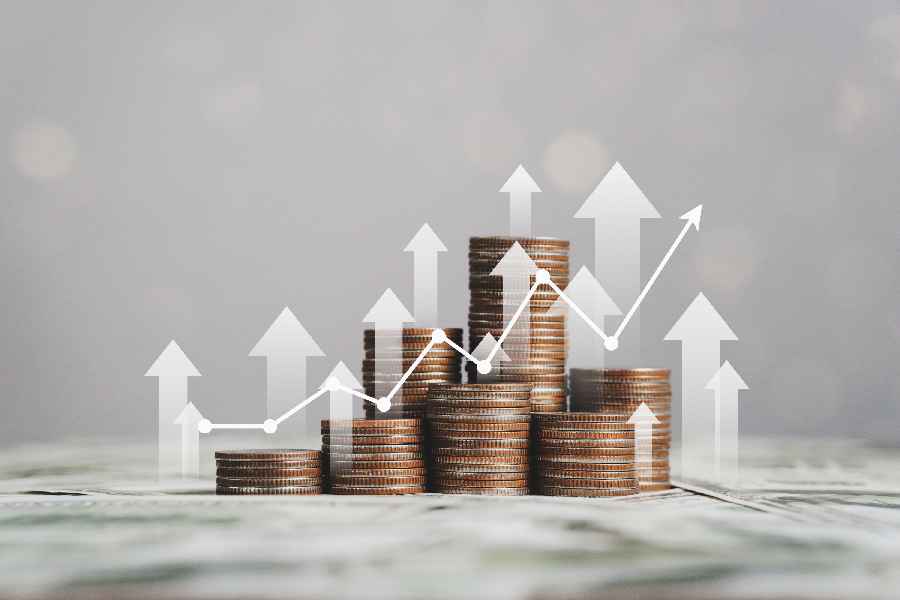trending
neon
Cirque du Soleil offers summer ticket deals
dining out
Celebs ditch the Strip for iconic Henderson restaurant
july 
trending
neon
Cirque du Soleil offers summer ticket deals
dining out
Celebs ditch the Strip for iconic Henderson restaurant
july 

The U.S. investment landscape in 2025 is undergoing significant shifts due to economic policies, trade regulations, and financial reforms. This article explores key policy updates, their effects on investors, and future economic implications




The U.S. investment landscape in 2025 is witnessing significant shifts driven by evolving economic policies, trade regulations, and financial reforms. Under the new administration, key policy changes are reshaping investor sentiment, market performance, and the global economic outlook. This article delves into the latest developments, their implications, and what investors need to consider moving forward.
The Federal Reserve remains at the forefront of shaping investment conditions in 2025. Following a series of interest rate hikes in previous years to combat inflation, the Fed has now adopted a more cautious stance. In its latest decision, the Federal Open Market Committee (FOMC) opted to maintain interest rates at 4.25%–4.50%, emphasizing data-driven policymaking.
Economists predict that interest rate cuts may not come until Q3 2025, depending on inflation trends and economic growth data. Investors are advised to diversify portfolios and adopt a defensive strategy in response to these monetary policies.
The administration has reinforced its "America First" trade policy, prioritizing domestic industries, reducing trade deficits, and tightening regulations on foreign investments.
The U.S. has imposed higher tariffs on select Chinese imports, targeting sectors such as semiconductors, electric vehicles, and renewable energy components. This move aims to boost domestic manufacturing but has sparked concerns about supply chain disruptions and retaliatory tariffs.
Additionally, trade agreements with Canada, Mexico, and the European Union have been revised to include stricter investment protections and technology transfer regulations.
A major shift in 2025 is the introduction of the Outbound Investment Security Program under the U.S. Department of the Treasury. The program aims to:
This policy has led venture capital and private equity firms to reassess their global investment strategies, with some shifting focus back to U.S.-based startups and emerging industries.
The administration has revised corporate tax policies, aiming to balance economic growth with fiscal responsibility. Key changes include:
The Securities and Exchange Commission (SEC) has introduced new transparency requirements for hedge funds and private equity firms. These measures:
While some investors welcome these reforms, others argue that increased regulation may stifle financial innovation and market growth.
The U.S. remains a global leader in artificial intelligence (AI) and semiconductor manufacturing. However, government restrictions on foreign investments have reshaped the sector’s funding landscape.
In a controversial move, the administration suspended $300 billion in clean energy loans, citing concerns over economic feasibility. However, tax credits for renewable energy projects remain intact.
Higher interest rates have cooled the real estate market, particularly in high-cost metropolitan areas. However, opportunities exist in:
Cryptocurrency regulation remains a hotly debated topic in 2025. Key developments include:
While regulations aim to curb fraud and market manipulation, some crypto advocates warn of potential overreach.
The U.S. remains a dominant global investment destination, but international competition is intensifying.
Foreign direct investment (FDI) into the U.S. is expected to remain strong, particularly in technology, healthcare, and infrastructure. However, geopolitical risks and policy changes may impact investor confidence.
Amid these policy shifts, investors should consider:
Diversification: Spread investments across multiple sectors to mitigate risk. Focus on Domestic Growth: U.S.-based industries with government backing offer stability. Monitor Interest Rate Trends: Fixed-income investments may become more attractive if rates decline later in the year. Adapt to Regulatory Changes: Stay informed on tax and trade policies affecting specific industries.
The U.S. investment landscape in 2025 is undergoing significant shifts due to economic policies, trade regulations, and financial reforms. This article explores key policy updates, their effects on investors, and future economic implications
the latest

U.S. GDP Growth Projections Amid Ongoing Supply Chain Issues
As the U.S. grapples with persistent supply chain issues, GDP growth projections for the coming years are being affected. This article explores the impact of these challenges on the economy and forecasts for 2025.

New Tax Reforms Expected to Stimulate Investment in Small Businesses
New tax reforms in the U.S. are designed to incentivize investment in small businesses, potentially driving economic growth and job creation. This article explores the expected impact of these reforms

Global Economic Concerns: How U.S. Policies Are Shaping the Future
As the U.S. continues to implement key economic policies, global markets are taking note. This article explores how these policies are influencing economic conditions worldwide and what it means for future growth

The U.S. Labor Market: Strong Jobs Report Signals Continued Economic Recovery
The latest U.S. jobs report shows strong gains in employment, signaling continued recovery in the labor market. This article explores the implications of these positive labor market trends for the broader economy

Inflation Remains a Challenge for U.S. Economic Growth in 2025
As the U.S. economy heads into 2025, inflation remains a persistent challenge. This article explores the causes of inflation, its effects on economic growth, and potential solutions for managing rising prices

Stock Market Volatility and Its Impact on Economic Stability
Stock market volatility has far-reaching effects on economic stability. This article explores the causes of stock market fluctuations and their impact on growth, investment, and consumer confidence

Biden's Economic Agenda: Key Policies to Shape Future Growth
President Biden's economic agenda focuses on sustainable growth through infrastructure investment, clean energy initiatives, and tax reforms. This article explores the key policies shaping the future of the U.S. economy

U.S. Reforms: What They Mean for Investors
Recent U.S. reforms are reshaping investment strategies, affecting markets, businesses, and investor confidence. Learn how these changes influence financial decisions

The Link Between U.S. Growth and Investment Strategies
Explore how investment strategies shape U.S. economic growth, influencing markets, businesses, and financial trends for long-term stability